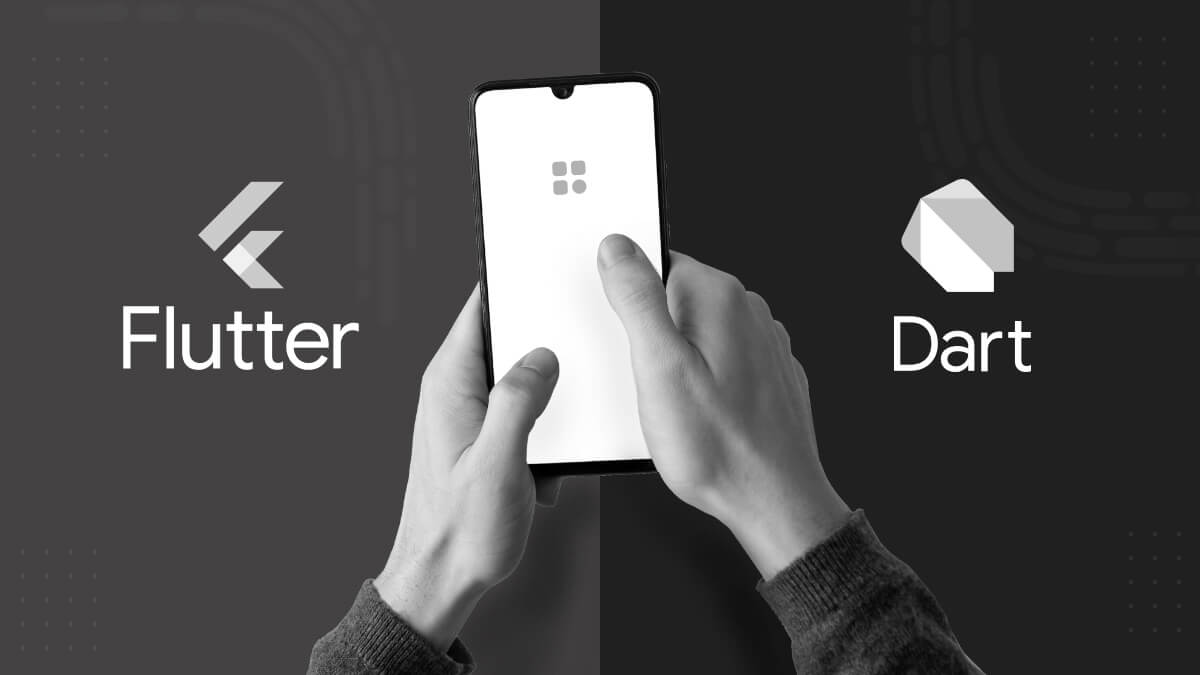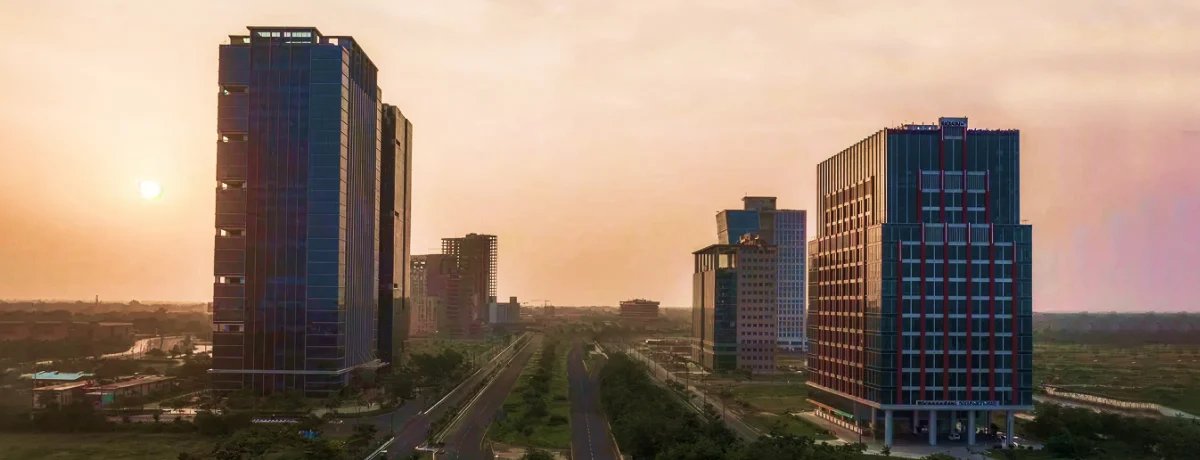One of the essential reasons why programmers love Flutter and prefer it over other frameworks is because of the programming language Dart. During the inception of Flutter, programmers analyzed and evaluated many languages and ended up choosing Dart due to some surprising reasons and benefits it offers to the programming. Here are some of the reasons why Flutter uses Dart.
What is Dart?
Dart is a client-optimized programming language developed by Google and launched in the year 2011. The programming language syntax is similar to Java & C++ and you can use it to build mobile, desktop, server, and web applications. The Dart code compiles to native or JavaScript in order to run in the browser.
Dart’s manifesto is that it uses Ahead Of Time (AOT), which compiles the code swiftly into native in a predictable way. Developers thus enjoy the breeze of developing apps using Dart for Flutter. This feature makes it favorable for developers to code accurately and checks for the response, thereby delivering the program instantly.
When it comes to customization, it becomes easy for developers to customize everything, and that too quickly.
Also, if developers want to develop animations and transitions, it is very easy and quick with Dart. These animations run at the speed of 60 frames per second. Also, Dart is capable of doing object allocation and garbage collection without any locks and does not need preemptive scheduling and shared memory. Also, when it comes to creating a bridge between realms, you do not need it in Dart, as it compiles Flutter apps to native code. The startup time is also faster and quick.
Why Flutter uses Dart
Flutter uses Dart as Dart allows Flutter to avoid the need for a separate declarative layout language like JSX and XML. The layout of Dart is declarative and programmatic, and it makes it easy for developers to read and visualize it very quickly and effortlessly. In addition to that, it makes it easy for Flutter to provide additional tooling as the layout is in one language and commonplace.
Another important reason why the duo is popular is that Dart, if required, uses the Just In Time compilation. This drastically reduces the time of development and responds faster.
Most of the Dart features are similar to that of static and dynamic languages, and it makes it easy for developers to learn and understand Dart easily and quickly.
If you see closely, not all the features mentioned above are extraordinary and superior. However, when these features are combined, they serve as the best implementer for Flutter. It is not an overstatement to say that Flutter app development would not be as smooth and streamlined without Dart for the Flutter app development company.
Let’s discuss some of the additional characteristics of Dart that explain a strong relationship between Flutter and Dart.

Compilation and Execution
If you look at the history of web application development, there were a total of two types of programming languages: static languages and dynamic languages. Static languages in which variables are typed statically, such as C and Fortran, at compile time. Dynamic languages are ones in which the variable can be changed at run time, such as JavaScript. Also, static languages were used to write native machine code that the hardware could run, whereas an interpreter executed dynamic languages, and it did not require any machine language code.
With time, things have advanced and become somewhat complicated too. The developers introduced virtual machines that can mimic a hardware machine in software. They are called advanced interpreters. They make it easier for developers to port a language to new and advanced hardware platforms. And the input language executed on a virtual machine becomes an intermediate language.
Also, the time is now for Just In Time compilers and Ahead of Time compilers that run during the execution of the program and compile it on the fly.
You measure the development cycle by the time between making a change or modification to the program. Despite that, the time taken to execute the program also counts to see the result of the change. When it comes to AOT compilation, development cycles go slow. You might find it a limitation for AOT compilation. But the accuracy and the program can run predictably without pausing for analysis and compilation at runtime. In addition to that, it is quick and easy to execute compiled programs.
On the other hand, when it comes to JIT compilation, it offers much more development cycles. But the execution is slow and jerkier. Also, the starter time for JIT compilers as it has to give some time for analysis and compilation of the program. The main issue is user experience here. Users will abandon the app if it takes more time to execute and load.
How about combining both AOT and JIT? What would be the effects on program execution? Let’s discuss.

Compiling and Executing Dart
Dart developers understood this issue before they started working on Dart Development. Hence, they have done unparalleled work on advanced compilers and virtual machines for dynamic and static languages. The result was awesome. Dart is phenomenally flexible when it comes to compilation and execution.
If you are looking for a language that is excellent at compiling both AOT and JIT, Dart is your answer. The reason why Flutter with Dart makes a great pair is the significant advantages Dart brings by being capable of supporting both types of compilation.
During the development, Dart performs JIT compilation with its fast compiler. Besides, when the app is ready for release and deployment, it is compiled AOT. Dart helps achieve the two most crucial aspects- 1) superior and rapid development cycles; 2) quick and fast Execution and startup times.
Not just that, Dart can also be compiled into JavaScript, and it allows Flutter developers to use the code between mobile apps and web apps. Using the Dart compiler, you can compile the Dart program into native code.
It is a standalone and highly effective virtual machine that uses Dart language as its intermediate language and acts as an interpreter. Also, you can compile and transpile Dart into other languages too. It is not just flexible and versatile but extremely fast too.
Additionally, Dart has the potential to prevent jank, caused because of a variety of reasons. The predictableness of Dart gives you better control over the application. So, you can easily avoid Janks in the Flutter code.
Read Also : How to Easily Convert Your Already Existing App to Flutter?
More reasons why Flutter uses Dart
Eliminates XML Files
Because Dart’s layout is easy to read and visualize, Flutter doesn’t require a separate language for its layout, like XML. Flutter also has advanced tooling as everything is in one language and in one place.
Eliminates the JavaScript Bridge
Dart’s direct compilation and execution into native code without an intermediary bridge (e.g., JavaScript to Native) allows for hitchless animations on a user’s gadget, as well as smoother user interfaces running at 60fps. Additionally, Dart is able to perform object allocation and garbage collection without the need to acquire locks.
Scaffolding
The scaffold in Flutter is noticeably different from the scaffolds in iOS or React Native or Android UI. One key difference is that it stretches to fill in the space available. This typically results in the scaffold taking up the entire screen of the device window.
The scaffold has APIs for an app bar, drawers, floating buttons, and the bottom sheets so that the primary content design’s graphic interface can be enforced.
Incorporates HTTP
The Dart programming language uses an abstraction called Future to host HTTP resources from the internet. The http.get() function returns a Future that contains a Response. The Future class is used in Dart to deal with asynchronous functions, and a future object reflects a possible value or error that will be visible in the Future at some point.
If you wonder how to hire Flutter developers, we have the best guide, curated based on our own experiences, to ensure the right hiring.
Flutter and Dart are friends forever!
As you saw in the post, there are some excellent benefits Dart offers to the developer. Developers can use it as a compiler and executor for developing superior, comprehensive, robust, and fast apps. Besides, Flutter and Dart are both Google’s products, which makes them the deadliest duo, extending support for other Google products as well. So, companies and entrepreneurs, if you want to build something unique, hire experienced Flutter developers before someone else hires them.












 Contact Information
Contact Information